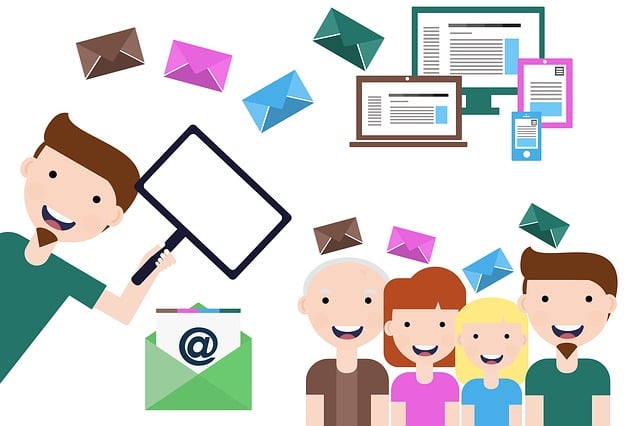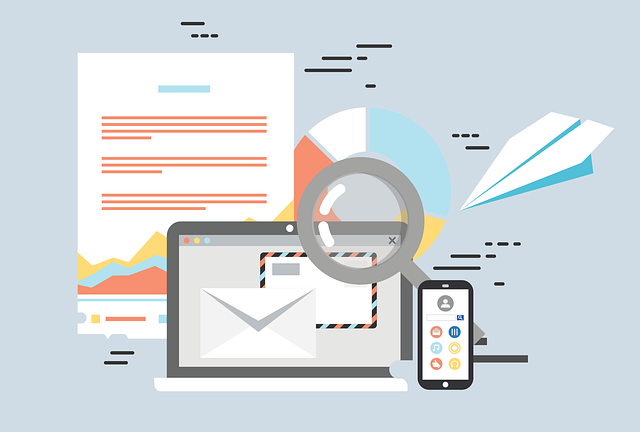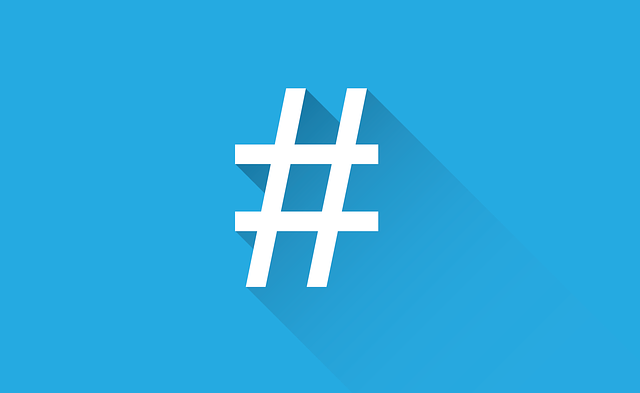Are you struggling to decide between email marketing and push notifications for your mobile app? You’re not alone. These two powerful tools have the potential to significantly impact your app’s success. In fact, they can make or break your user engagement and retention rates.
It’s like a battle between David and Goliath, and you need to choose wisely to come out on top. Email marketing, like the classic David, has been around for ages. It’s a trusted and effective method for reaching your audience directly.
On the other hand, push notifications, the mighty Goliath, are the new kid on the block. They offer instant and personalized communication with your users. In this article, we’ll delve into the pros and cons of each approach, providing you with the data-driven insights you need to make an informed decision.
By the end, you’ll have a clear understanding of which strategy is better suited for your mobile app. So, let’s dive in and find out if the traditional underdog or the modern powerhouse will reign supreme in your marketing arsenal.
Key Takeaways
- Email marketing is a trusted and effective method for reaching the audience directly.
- Push notifications offer instant and personalized communication with users, resulting in higher retention rates.
- Combining email marketing with push notifications creates a multi-channel approach for better engagement.
- Click-through rates and time spent on the app can measure the effectiveness of push notifications.
Understanding Email Marketing
Email marketing is a powerful tool that can captivate your audience and boost your mobile app’s success. By implementing effective email marketing strategies, you can engage users, increase app downloads, and drive conversions.
One of the key factors for email campaign success is personalization. Tailoring emails to individual users based on their preferences and behaviors can significantly improve open rates and click-through rates.
Additionally, optimizing email content for mobile devices is crucial in today’s mobile-driven world. With more people accessing emails on their smartphones, it’s essential to ensure that your emails are responsive and visually appealing on smaller screens.
Furthermore, leveraging data analytics to track email performance and make data-driven decisions is vital. By analyzing metrics such as open rates, click-through rates, and conversion rates, you can refine your email marketing strategies to achieve better results.
Now, let’s explore the power of push notifications.
The Power of Push Notifications
With the ability to directly reach users and create a sense of urgency, push notifications unleash a powerful force that can propel mobile apps to greater success. These concise messages have the potential to engage users and keep them coming back for more.
Research shows that push notifications have an impressive impact on user retention, with a 7x higher retention rate compared to apps without push notifications. By delivering timely and relevant information, push notifications can grab users’ attention and encourage them to take action. Whether it’s a limited-time offer or a personalized update, push notifications have the power to deliver engaging content that keeps users hooked.
But while push notifications are undeniably effective, it’s important to consider the advantages of email marketing for mobile apps as well. Transitioning into the next section, let’s explore the benefits of email marketing in more detail.
Advantages of Email Marketing for Mobile Apps
By harnessing the power of targeted messaging, mobile apps can tap into a strategic tool that drives user engagement and boosts app success. Email marketing is an effective way to engage with users and keep them coming back to your app.
Here are three advantages of using email marketing for mobile apps:
-
Increased mobile app engagement: With personalized email campaigns, you can send relevant content and updates directly to your users’ inboxes. This keeps them informed and engaged, leading to increased usage of your mobile app.
-
Improved customer retention: By regularly communicating with your users through email, you can build a relationship and keep them loyal to your app. Sending exclusive offers and incentives can also encourage them to continue using your app.
-
Greater reach and visibility: Unlike push notifications that only reach users who have installed your app, email marketing allows you to target both existing and potential users. This widens your reach and increases the visibility of your mobile app.
Email marketing offers several advantages for mobile apps, including increased engagement, improved customer retention, and greater reach. However, it’s important to explore the benefits of push notifications for mobile apps as well.
Benefits of Push Notifications for Mobile Apps
One key advantage of utilizing push notifications in mobile apps is their ability to instantly deliver important updates and notifications to users. Push notifications have the power to engage users in real-time, increasing their interaction and overall engagement with the app.
These notifications can be personalized and tailored to each user’s preferences, providing relevant information and enhancing the user experience. Additionally, push notifications have been proven to improve user retention rates by reminding users of the app’s value and encouraging them to return.
By analyzing engagement metrics such as click-through rates and time spent on the app, developers can measure the effectiveness of push notifications in driving user engagement.
Transitioning into the subsequent section about the drawbacks of email marketing for mobile apps, it’s important to consider alternative strategies for effectively reaching and retaining users.
Drawbacks of Email Marketing for Mobile Apps
Although email campaigns can be effective in reaching a wide audience, studies have shown that the average open rate for mobile app marketing emails is only around 20%. This means that a majority of users are not even opening the emails, let alone engaging with the content. One of the main challenges with email marketing for mobile apps is the high likelihood of emails being ignored or sent to spam folders. Additionally, users may not have their email notifications turned on or may simply overlook marketing emails in the midst of a cluttered inbox. These low open rates can greatly limit the reach and effectiveness of email marketing campaigns for mobile apps.
However, there is a better alternative that can overcome these challenges and provide higher engagement rates – push notifications.
[Transition to the subsequent section about ‘limitations of push notifications for mobile apps’]
Limitations of Push Notifications for Mobile Apps
Are you aware of the limitations that come with using push notifications for your mobile app?
While push notifications can be an effective tool for engaging users and driving app usage, there are certain drawbacks to consider. One limitation is push notification effectiveness. Research shows that push notifications have lower open rates compared to emails, with only around 50% of users opening them.
Additionally, users can easily become overwhelmed by a flood of push notifications, leading to app fatigue and potential uninstalls.
However, there are alternatives to push notifications that can help overcome these limitations. In-app messaging, for example, allows you to engage users within the app itself, providing a more personalized and less intrusive experience.
Another option is using email marketing in combination with push notifications to create a multi-channel approach that reaches users through different touchpoints. By considering these alternatives, you can optimize your mobile app’s engagement strategy and ensure a better user experience.
Frequently Asked Questions
Can push notifications be used for all types of mobile apps, or are they more suitable for specific industries or purposes?
Push notifications can be used for all types of mobile apps, but they’re more suitable for specific industries or purposes. Push notification targeting allows you to send personalized messages to a specific group of users based on their demographics or behaviors.
Additionally, push notification frequency is crucial in maintaining user engagement. Too many notifications can lead to annoyance, while too few can result in users forgetting about your app. Therefore, it’s essential to strike a balance and use push notifications strategically.
How can email marketing campaigns be personalized to enhance user engagement and increase conversion rates?
To enhance user engagement and increase conversion rates, you can utilize personalization techniques in your email marketing campaigns.
Start by segmenting your audience based on their preferences and behavior. Then, tailor the content accordingly.
Use dynamic content to deliver personalized recommendations and offers based on user data.
Incorporate personalized subject lines and dynamic email designs to grab attention.
By implementing these strategies, you can optimize conversion rates and ensure that your email marketing efforts are effective in driving user engagement and conversions.
Are there any legal regulations or best practices that mobile app developers need to follow when using push notifications?
Legal regulations for push notifications are essential for mobile app developers to ensure compliance and protect user privacy. Best practices include obtaining explicit user consent, providing clear opt-out options, and delivering relevant and timely content.
Following these guidelines helps maintain a positive user experience and prevents potential legal issues. Incorporating a data-driven approach, developers can analyze user engagement and conversion rates to optimize push notification strategies.
By adhering to legal regulations and implementing best practices, developers can effectively engage users while respecting their rights.
What are some effective strategies for building and growing an email subscriber list for a mobile app?
To effectively build and grow an email subscriber list for your mobile app, implement these strategies.
First, offer opt-in incentives such as exclusive content or discounts to entice users to sign up.
Second, optimize your app’s user interface to make the sign-up process simple and seamless.
Third, utilize social media and other marketing channels to promote your app and its benefits.
Finally, regularly engage with your subscribers by sending personalized, valuable content to maintain their interest and loyalty.
These strategies have proven to drive higher email subscriber rates and enhance app retention.
Can push notifications be used to re-engage inactive users and encourage them to return to using the mobile app?
Looking to bring those inactive users back to your mobile app? Re-engagement tactics are the answer. And guess what? Push notifications are your secret weapon.
With the right timing, push notifications can nudge users to return and reignite their interest in your app. Research shows that timely push notifications can increase user retention by up to 60%. So don’t underestimate the power of push notifications in bringing those inactive users back into the fold.
It’s time to re-engage and reclaim your app’s success.
Conclusion
In conclusion, it’s clear that both email marketing and push notifications have their pros and cons when it comes to mobile apps.
While email marketing offers a wider reach and the ability to deliver personalized content, push notifications provide instant engagement and real-time updates.
However, it’s ironic that despite the limitations of both methods, they remain crucial in driving user engagement and retention for mobile apps.
So, instead of choosing one over the other, why not leverage the power of both to create a comprehensive marketing strategy that maximizes your app’s potential?







